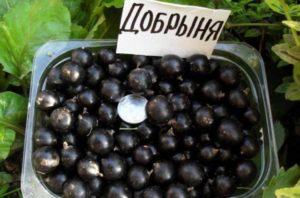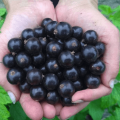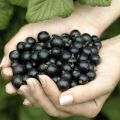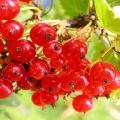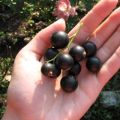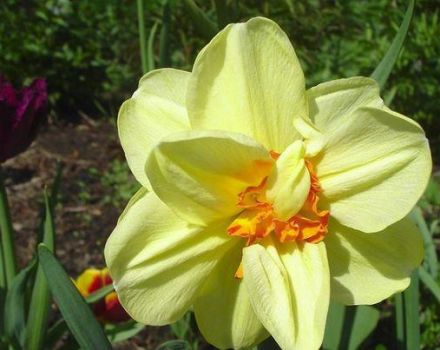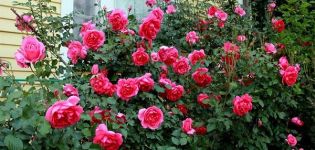Characteristics and description of the currant variety Dachnitsa, planting and care features
Blackcurrant used to be very popular with gardeners. Compotes, jam, pie filling were made from tasty berries. Then she lost popularity as she suffered greatly from pests and diseases. Today, the berry is successfully returning its lost positions, many modern varieties have appeared that give excellent yields. Currant Dachnitsa is one of such successful works of breeders, and we will talk about it.
A little about the history of the Dachnitsa variety
The modern variety of domestic selection was bred by the Scientific Research Institute of Horticulture of Siberia.
The variety was entered into the State Register of the Russian Federation in 2004. A hybrid obtained by crossing 2 varieties: Seedlings of blueberry and currant Bradthorpe. The breeders' group consisted of Knyazev, Ogoltsova, Bayanova and Zotova. As a result of the work, a variety of black currant was obtained, suitable for areas with a harsh Siberian climate. The summer resident grows well in the Urals and the Far East, does not like heat and tolerates frosts down to -30 ° C.
Description and characteristics of culture
Black currant is a very popular berry in Russia, it is especially appreciated in the northern regions, for having a large amount of vitamin C, useful microelements. The berry is used for the preparation of wines and liqueurs, it is used fresh, in the form of preserves, compotes and jams.
Blackcurrant leaves have long been added to tea, various pickles, to add a piquant taste and aroma. The berries are high in potassium, zinc, iron, phosphorus, magnesium, and other trace elements. They contain a lot of pectins, so the berries make a delicious jelly.

Currant is widely used in folk medicine, as a general tonic for vitamin deficiency, as a diuretic and expectorant.
Bush, shoots, root system
The Dachnitsa variety has undersized, not too dense, compact bushes with bright green, not pubescent and shiny shoots. Mature woody branches lose their luster and turn gray-brown. The bush has small five-lobed bright green leaves that darken over time, and a not too powerful root system. The fibrous roots horizontally correspond to the radius of the bush and go 20-40 centimeters deep.
Flowering and berries
The plant blooms in the middle or end of May (depending on weather conditions), blooms with nondescript yellowish flowers, similar to bells brushes. Each cluster contains 6-8 small flowers. At the final stage, the flowers turn cherry purple.
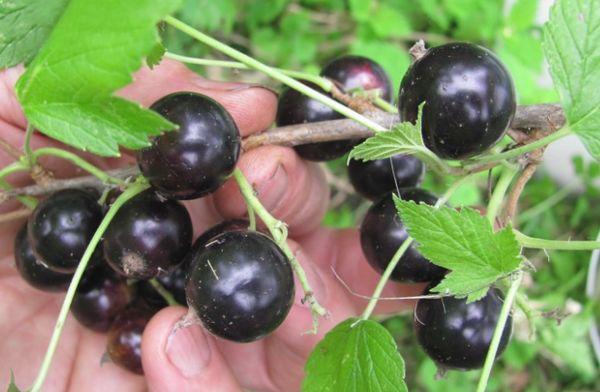
The summer resident belongs to the early varieties and has a high sugar content of berries. Tasting score of fruits - 4.8 points out of 5. Fruits ripen in June, the berries are large, bluish-black, with thin skin. They taste sweet, the sourness characteristic of currants is practically absent. Oval, shiny berries lose keeping quality if you skip the collection time. The summer resident will delight with the first harvest for 3 years after planting.
Features of currants
Modern varieties of currants, among them the Dachnitsa, are resistant to diseases and pests, the bushes, with a compact size, provide a high yield, and she has other advantages.
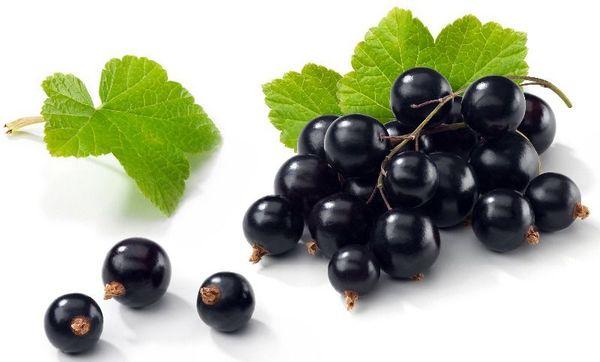
Susceptibility to diseases and pests
The modern blackcurrant variety - Dachnitsa - was bred for several specified purposes. The main task for the breeders was to obtain a plant that is resistant to various types of infection. The variety turned out to be highly resistant to any type of infection, and has an average resistance to pest infestation. The summer resident can be damaged by moth caterpillars, glass. In this case, the currants are sprayed with Karbofos or Fufanon.
Resistant to low temperatures and drought
The variety can withstand temperatures as low as -30 ° C. Young plants are severely affected by drought. An adult currant of this variety acquires resistance to a lack of moisture, but still does not like the southern regions too much.
Ripening period and yield
Summer resident is an early maturing variety. The crop can be harvested at the end of June. Up to 2 kg of berries are obtained from each compact young bush. The peak of fruiting occurs at 5-7 years of plant life. The bush bears fruit up to 15 years, with age the berries become smaller, and the yield decreases. The variety is self-fertile, but planting 2 blackcurrant bushes next to it will ensure the stability of fruiting and improve yields.
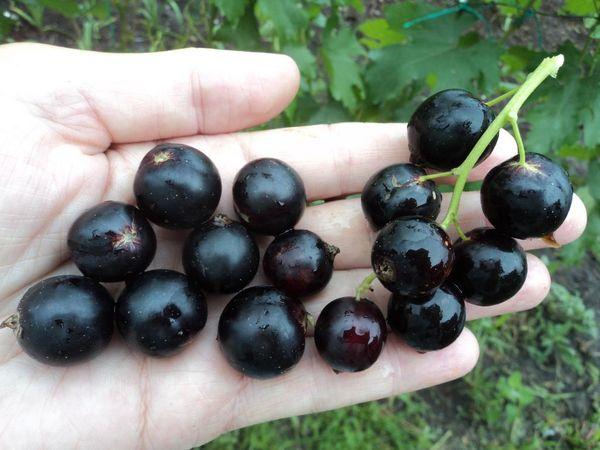
Transportability and use of berries
The summer resident is characterized by amicable ripening of berries. They are well transported if they do not have time to over-ripe. If necessary, the harvested crop can be stored at + 4 ° C for several days.
Berries do not lose their flavor characteristics during shock freezing. They are used for home and industrial production of fruit drinks, preserves, jams. Very tasty and fragrant rubbed with sugar.
How to plant a Summer resident on the site
In order for the currant bushes to take root well, give a good harvest and do not suffer from diseases, it is necessary to follow several rules when planting a Summer resident on the site.
Seat selection
For Summer Residents, choose a light, fertile and well-drained neutral soil.
Advice: the soil with high acidity must be deoxidized; lime or wood ash is suitable for this.
Young bushes are planted in sunny areas, penumbra currant tolerates well. Areas where raspberries, gooseberries, sea buckthorn used to grow are not allocated for currants. This allows you to protect young seedlings from diseases inherent in berry bushes. Currants should not be planted under fruit trees and in lowlands, they do not like waterlogging of the soil.
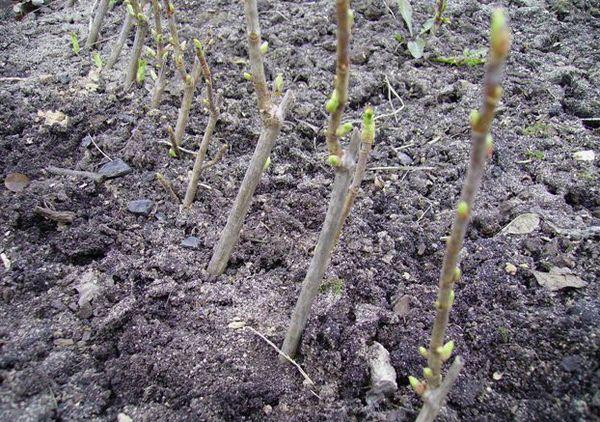
Recommended landing dates
Young currant bushes are planted in open ground either in the fall - after harvesting, while the days are still warm, or in the spring - after the soil warms up. Autumn planting is preferable as the bushes become more hardy.
Important: it is necessary to plant the bushes in warm weather, in September, when at least 3 weeks before the autumn frosts. During this time, the seedlings have time to adapt to a new place.
In spring, the bushes are planted after warming up the soil.Damp soil promotes better rooting of seedlings.
Preparing the plot and the seedling
Varietal seedlings should be purchased from trusted suppliers, you should familiarize yourself with the product certificates.
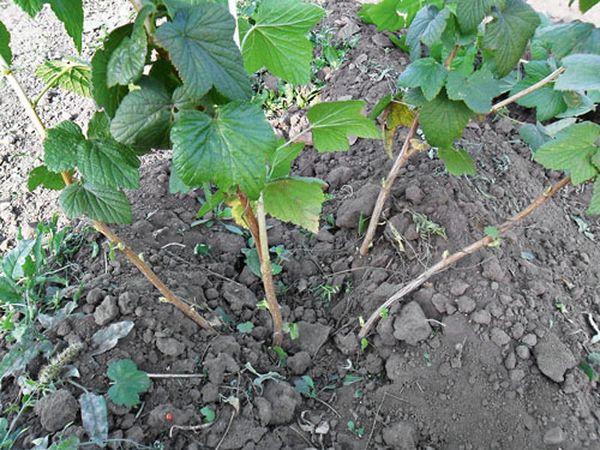
They must have a strong root system, 2-3 skeletal roots and a large number of branched lateral roots are needed.
When sold, the roots should be moist, without rot, and the branches should be elastic, with a dense, healthy bark, 30-40 centimeters long. You should pay attention to the condition of the kidneys when buying a seedling. If the buds are dry, a different specimen should be selected.
For planting, choose areas that are even or with a slight slope, in the sun or in partial shade. Plant pits are placed at a distance of 2-2.5 meters from each other. Usually several currant bushes are planted on the site. Currants do not like crowding. If it is planted in rows, there should be at least 1.5 meters between the bushes in a row, and the row spacing should be 2-3 meters.
A pit for a currant seedling needs 60 centimeters in diameter and 50 centimeters deep.
Landing technology
It is better to prepare planting pits in advance to ensure soil shrinkage. A drainage layer of small pebbles is poured at the bottom of the pit, the pit is filled with humus by 2/3, adding 200 grams of wood ash.

When planting the Summer Resident, you should:
- examine the roots, remove damaged areas with a pruner;
- if a complex mineral fertilizer is used during planting, it must be mixed with the soil in order to prevent root burns;
- place the seedling in the hole at a slight angle to provoke the growth of new shoots;
- the root collar is located 5-6 centimeters below the level of the planting pit;
- carefully fill the hole with soil and compact;
- water at the rate of 0.5 buckets per seedling.
The planting is mulched, and during autumn planting, it is huddled high to protect the roots from freezing.
Seasonal currant care
Further, the development of the bush and yield depend on the care of the plantings.

Irrigation of bushes
Black currants are watered, depending on the weather, usually once a week or one and a half, use 3 liters of water for each bush, the berry does not tolerate overflow. It is better to water in the evening, during the night the moisture will saturate the bushes. When the berries are being poured, watering is stopped to avoid cracking the fruits.
Soil loosening
Currant roots are located close to the surface, so loosen it carefully so as not to damage the root system.
Fertilization
In the spring, azofoska is added under each bush. The fertilizer is simply mixed with the soil. Then the plant is watered every 10 days with infusion of plants, humus, diluted in water.
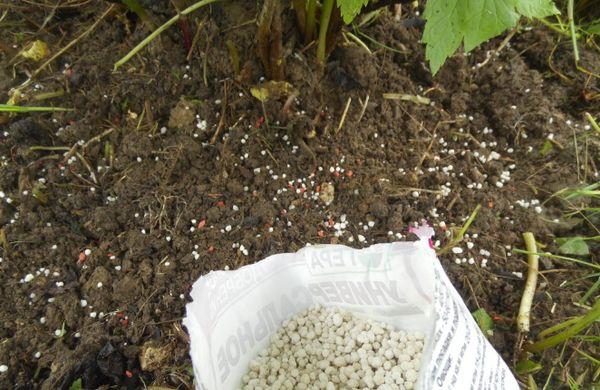
Formative pruning
It is held in early spring. Remove dried and frozen twigs, cut off diseased areas. Eliminate shoots growing inside the bush to prevent thickening. Use a clean and sharp garden tool for pruning. In addition, the Summer resident needs a garter - the branches lean heavily under the weight of the berries. Tied up immediately after pruning; it is convenient to use special hoops for shrubs, they can be found in garden stores.
Cold protection
Covering helps to protect berry bushes from frost. The branches are divided into bundles. They are carefully bent to the ground and tied to pre-prepared pegs, wire, hoop. The bush is mulched using sawdust, spruce branches, and fabric covering material. Snow is shoveled from above to insulate the plant.
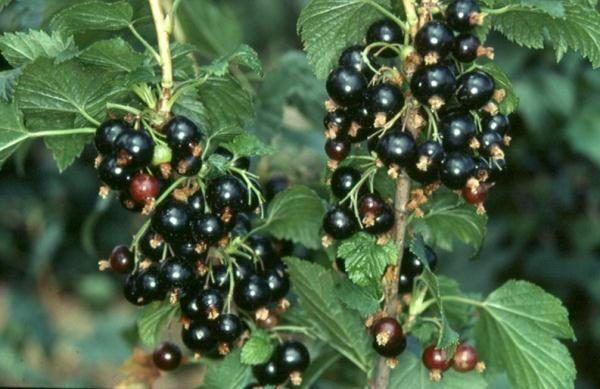
How to propagate a bush
Currants can be propagated independently, this can be done by cuttings, layering or dividing the bush.
By cuttings
Cuttings are made with green cuttings, 10-15 centimeters long. Each requires 3-4 kidneys. Cuttings with a slope are placed in open ground, periodically weeded and watered plantings. In autumn, the grown bushes can be planted in a permanent place.
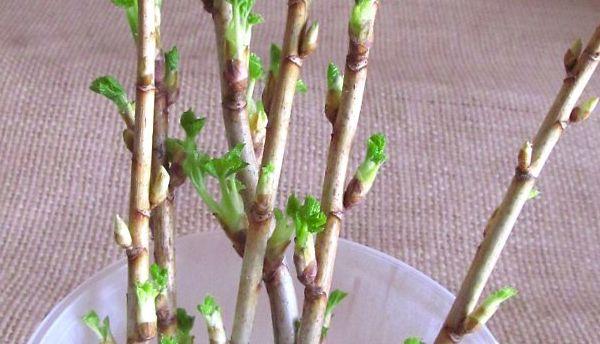
Layers
The soil is pre-loosened, fertilized and a furrow is made.A currant shoot is placed in it, carefully bending it. Fasten with staples (wooden or metal) so that the branch is pressed tightly to the ground. Fall asleep with a thin layer of earth. After emergence, the shoots spud, and in the fall they are divided, getting independent plants.
By dividing the bush
This method is used when transplanting a plant. The mother bush is dug up and, using an ax or a sharp shovel, it is divided into several parts, each of which must have a good root system and shoots.
Old and diseased branches are cut with pruning shears, leaving young growth. Plants are transferred to the desired location.
Culture reviews
Anna, 41 years old
“I love currants, I remember from my childhood this unique taste of berries rubbed with sugar, spread on a fresh loaf. I wanted to have a sweet variety on the site. I planted the Summer Resident, and did not regret it. The berries are large, sweet and aromatic. The harvest is good. It is often necessary to replant, it degenerates quickly, but this is the only drawback. "
Olga Nikolaevna, 56 years old
“I have ruined all the old currants - it has grown strongly, but there are no berries. I took 2 Dachnitsa bushes from a neighbor, and I'm not overjoyed. Unpretentious, tasty. I don't spray it with anything, my grandchildren eat right from the bush; it ripens early, when there is still little greenery. It helps a lot. "

